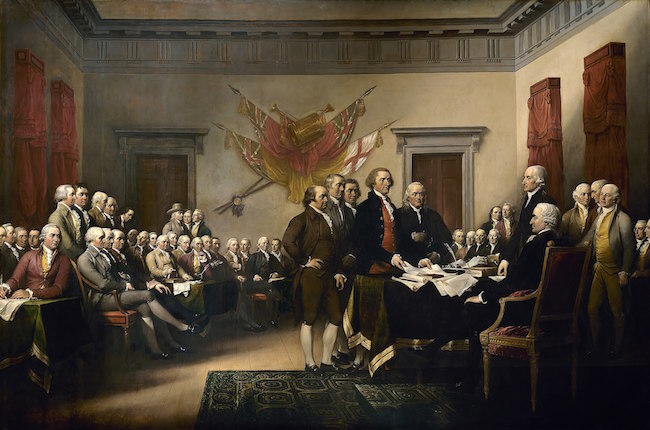The Birth of a Patriot
John Adams was born in 1735 to Henry and Susanna Boylston Adams. Adams graduated from Harvard University in 1755 and became an attorney in 1758. From an early age, Adams developed intense feelings for political causes. He wrote powerful speeches against the Stamp Act of 1765 but also defended British soldiers charged with murder after the Boston Massacre. In 1764, he married Abigail Smith. Together they would have five children, including future president John Quincy Adams. Their marriage would provide a source of comfort for John during his years away from her negotiating in Europe.
Political Life and Presidential Years
In 1771, Adams was elected to the Massachusetts House of Representatives, and later, to the Continental Congress in 1774. Adams carried great influence among the members of Congress and strongly favored separation from England. Adams also assisted in the drafting of the Declaration of Independence and the Massachusetts Constitution. He quickly became a vocal leader in the quest for independence and gained a reputation for being incorruptible, stubborn, and fiery. After spending several years negotiating business treaties with European powers at the conclusion of the Revolutionary War, Adams was elected as the second president of the United States (he lost to George Washington previously and served two terms as his vice president). His presidency, however, was marred by the passage of the Alien and Sedition Acts, controversy within his Federalist Party regarding foreign policy, and a general feeling that Federalists relied more on the ideas of Alexander Hamilton than his. Adams was defeated by Thomas Jefferson in 1800 in his bid for a second term in the presidency.
 |
| Declaration of Independence by John Trumbull. John Adams is at center with hands on hips. |
Later Life and Relationship with Thomas Jefferson
After completing his term as president, Adams became depressed and moved back to his home, called Peacefield, near Quincy, Massachusetts. He completely dropped out of politics. In 1812, however, he began corresponding with Thomas Jefferson, and the two former presidents sent letters to each other for fourteen years about politics, government, and philosophy. In 1825, his son, John Quincy Adams, was elected as America’s sixth president. On July 4, 1826, the 50th anniversary of the adoption of the Declaration of Independence, John Adams died at his home. Ironically, his friend and fellow Founding Father Thomas Jefferson died the same day, only hours before him.
Legacy as a Founding Father
Today, John Adams is remembered as one of the Founding Fathers. For much of history, however, he was overshadowed by the likes of Thomas Jefferson, George Washington, and Benjamin Franklin (whom Adams detested). Recently, however, Adams has been brought back into significance with the famous David McCullough novel called John Adams, which was turned into a popular seven-part film.